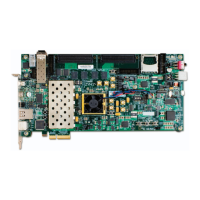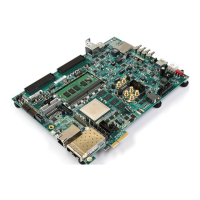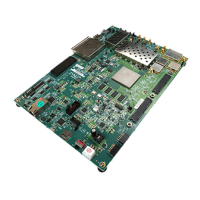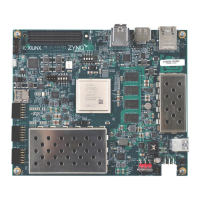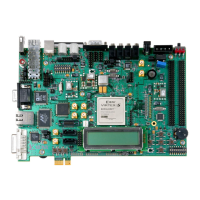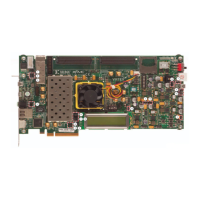Chapter 3: Getting Started with the Base Targeted Reference Design
38 www.xilinx.com ZC702 and ZVIK Getting Started Guide
UG926 (v3.0.1) February 12, 2013
°
The input video is generated by the TPG IP implemented in the PL.
• External video (available with the optional ZVIK FMC module)
°
The input video is supplied by an external video source and is connected through
the FMC-IMAGEON card.
Sobel Filter Modes are explained as follows:
Sobel OFF
• No processing done. Sobel filter is bypassed.
Sobel – SW
• Video processing (edge-detection filter) done by software code running on the PS.
• Observe CPU utilization going up to 100% for one of the two CPUs (this can be seen in
the CPU usage graph). In this mode, the frame rate of the video also drops to about
3 fps to 10 fps depending upon resolution.
Sobel – HW
• Video processing (edge-detection filtering) done by PL.
• Observe CPU utilization going down (to approximately 0) and the frame rate jumping to
60 fps.
Figure 3-8 shows the detected image edges of the video generated by the TPG, that is, case
1 versus case 2 or 3 of Table 3- 1 .
While exercising the modes described above, one can observe AXI bus bandwidth utilization
and CPU utilization on the graphs in the Qt GUI application.
8. Click Exit to quit the application and return the user to Linux console.
X-Ref Target - Figure 3-8
Figure 3-8: Images with Sobel Filter On (Left) and with Sobel Filter Off (Right)

